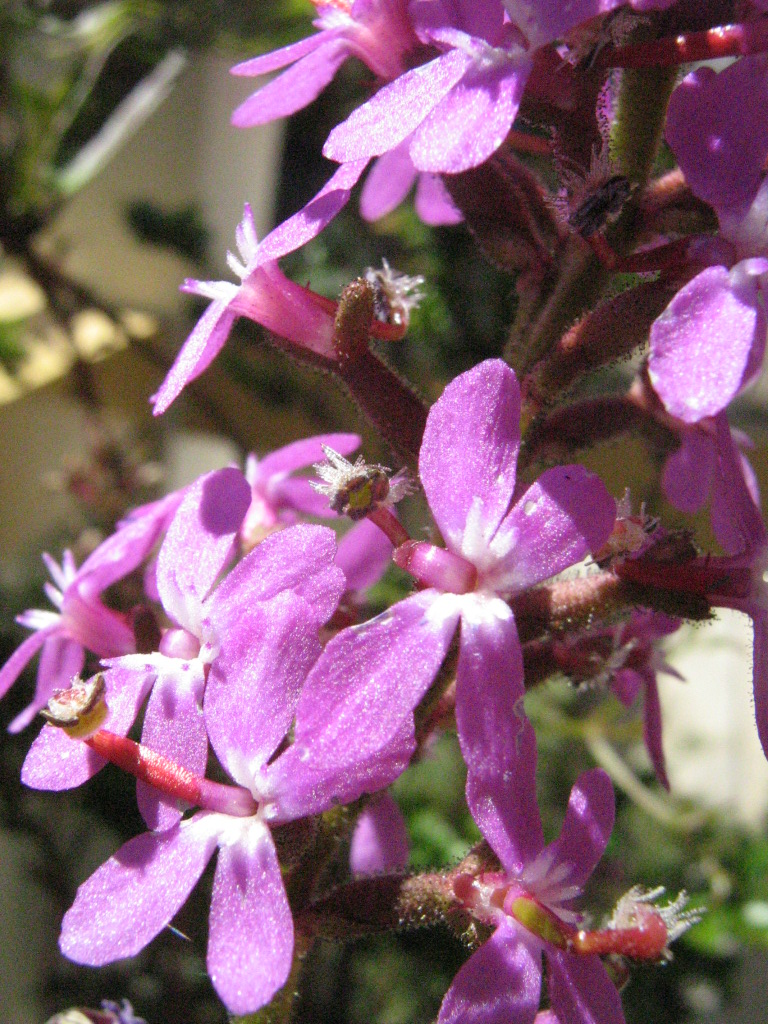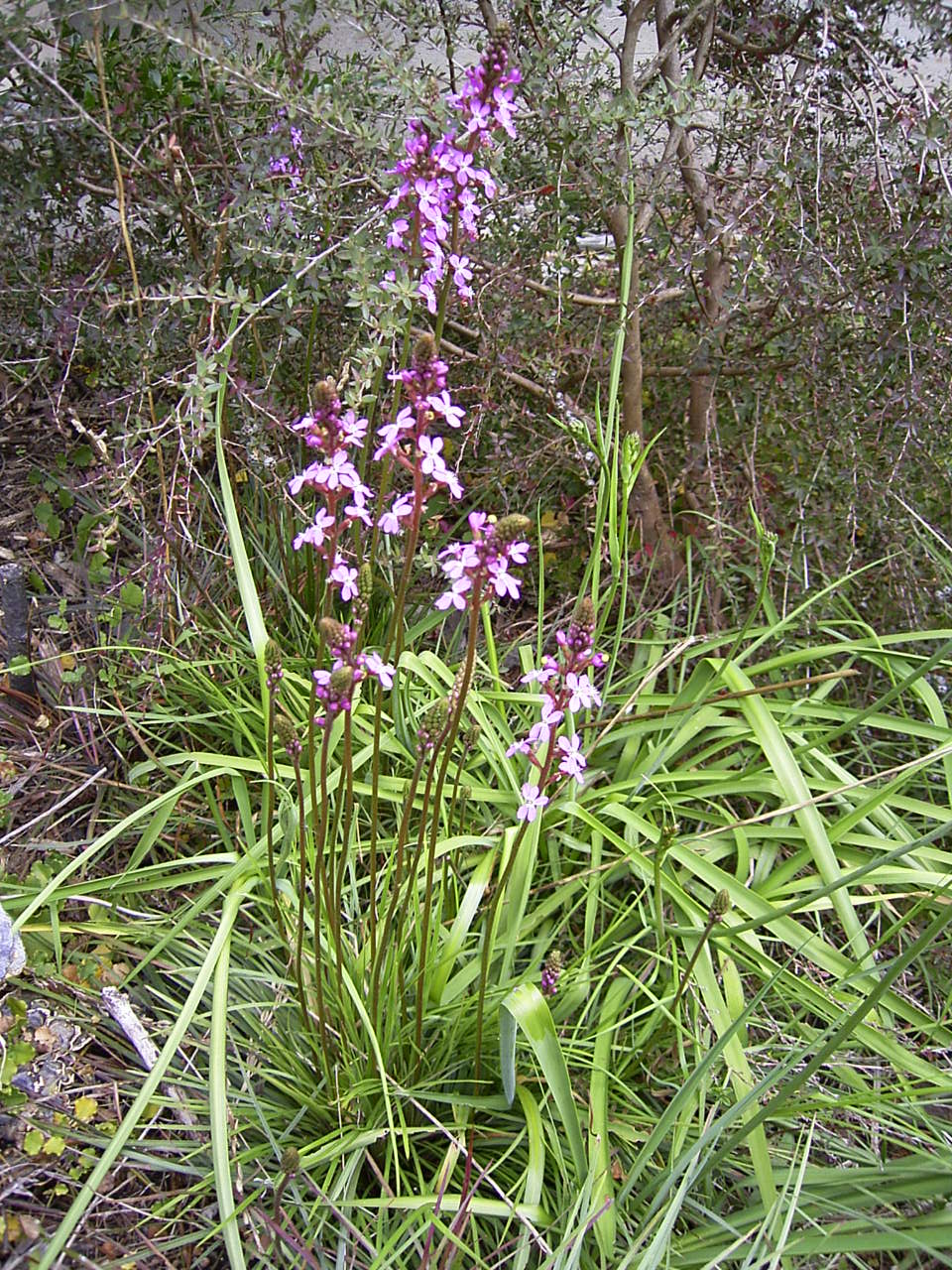Scientific Name: Stylidium graminifolium
Common Name: narrowleaf triggerplant
Family Classification (Clade): Eudicots
Family: Stylidiaceae
Form Description: Herb, variable in size, resembling a tuft of grass.
Height (m): 0.15 – 0.5
Flowers: One or more spikes of pink or lilac flowers to 75mm high.
Fruit: Papery capsule – small, turn from green to tan-brown and become brittle as they ripen. Seeds tend to ripen progressively along the flower stem. Seeds turn from green to red-orange at maturity. Hundreds of fine seed per fruiting stem.
Municipality
Plant Communities
Habitat Notes
Found in sedgeland and wetlands. Widespread and abundant in a wide range of soil-types from sea level to mountain plateaux.
Site Tolerance
Dry, Exposed, Moist, Rocky, Shady, Windy
Soil Tolerance
Fertile, Loam, Nutrient-poor, Sandy, Well-drained
Frost Tolerance
Hardy
General Notes
Good for mass planting in borders or in pots. Difficult to establish in open-ground situations. Of interest because of the “trigger” mechanism for ensuring cross-pollination. Attracts butterflies. Susceptible to Phytophthora cinnamomi.
Propagation Calendar
-
Flowering Month
Jan Feb Mar Apr May Jun Jul Aug Sep Oct Nov Dec -
Seed Collecting Month
Jan Feb Mar Apr May Jun Jul Aug Sep Oct Nov Dec -
Sowing Month
Jan Feb Mar Apr May Jun Jul Aug Sep Oct Nov Dec -
Cutting Month
Jan Feb Mar Apr May Jun Jul Aug Sep Oct Nov Dec
Propagation Method
Seed Information
Seed Collection
Cut stems holding erect and tip into bag.
Seed Treatment Method
Storage Stratification at 3-5°C for up to 3 months may improve results. Place seed in a damp medium, lightly covered. Put moist seeds in a plastic bag and store in the fridge.
Seed Treatment Notes
Seeds may have a 2-3 months after-ripening period. Surface sow.
Germination Time
7-10 weeks


